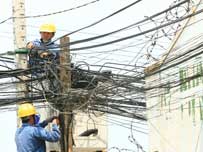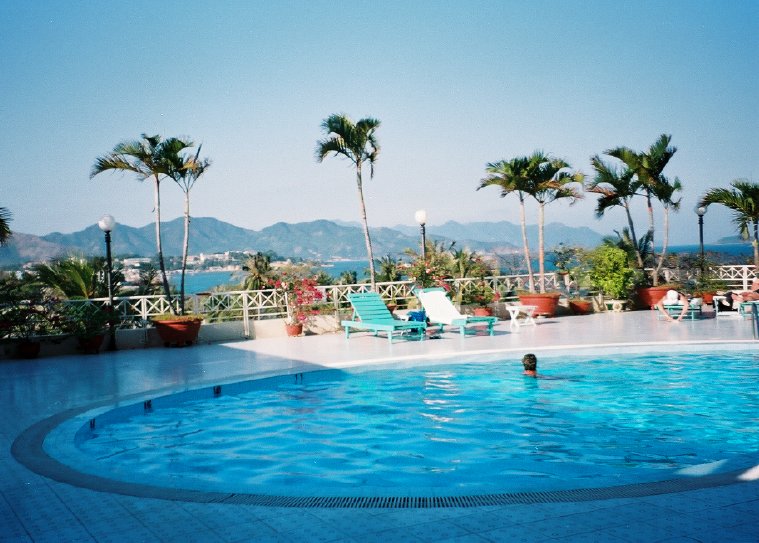INDOCHINA INTERNATIONAL CONSULTING CO., LTD
HO Add: 62L/36 Nguyên Hồng, Ward 11, Bình Thạnh District, HCMC - Vietnam
Biz Office Add: #48 Road No 11, Quarter 6, Hiệp Binh Chánh Ward, Thủ Đức, HCMC - Vietnam
®Source: http://viipip.com should be clearly quoted for any use of information extracted from our website.
Publication permit No: 60/GP-TTĐT , April 05, 2010.


As of July this year, Vietnam’s electricity sector has attracted only US$1.1 billion worth of foreign direct investment (FDI), including $901.5 million for the Phu My 3 and Phu My 2.2 plants, which came into operation in 2004 and 2005.
The figure is modest compared with the country’s declared need of $80 billion for electricity investment between 2006 and 2025, or $4 billion per year.
Several officials at an international seminar on energy development in Hanoi Thursday, stressed that a clear and transparent price frame would be the only way to draw foreign investors into the power sector.
The government should apply the same electricity prices for both domestic and foreign businesses, said Nguyen Xuan Trung, deputy head of the Foreign Investment Department under the Ministry of Planning and Investment.
Vu Tuan Hung, deputy general director of state-owned Song Da Corporation, said the government should periodically adjust power prices in accordance with economic growth and should also apply different prices in different areas.
Endless haggle
Foreign investors said as they normally had to work with Electricity of Vietnam (EVN), the country’s largest electricity producer and sole distributor, for several years in order to agree on a selling price. They said this had hampered their enthusiasm to enter the sector.
British oil firm BP and Electricite de France said they spent six years negotiating prices for Phu My 3 and Phu My 2.2, the only foreign-invested power projects to have been completed in Vietnam.
Though negotiation on the Mong Duong 2 thermal power plant in northern province of Quang Ninh started in 2006, the investors, a joint venture between the US’s AES and Vietnam Coal and Mineral Industries Group, have yet to reach a pricing agreement with EVN.
Trung said that while investors for power projects implemented under the BOT (build-operate-transfer) form in foreign countries were normally selected via bidding, Vietnam typically nominated investors for BOT projects.
He said this had damped competition, ensuring that the country rarely selected the best investor.
Tran Viet Ngai, chairman of the Vietnam Energy Association, echoed the point.
“The government should be concerned with two issues: price and bidding procedures. The power sector will be hard up for capital if it cannot attract FDI,” local newswire VietNamNet quoted Ngai as saying.
Losses
Ngai said EVN had last August refused to invest in 13 power projects the government had assigned to it due to a lack of funds.
EVN has recently told the Electricity Regulatory Authority of Vietnam that it would be unable to fulfill an order from the prime minister to cut the transmission power loss rate to 8 percent next year. Instead EVN suggested the government allow it to keep the rate around 9 percent.
The power firm said between 2004 and 2008 it managed to reduce its power loss from 12.23 percent to 9.21 percent, or an annual cut of 0.6 percent. According to EVN, this was an achievement as it was only supposed to cut the rate to under 10 percent by 2010.
However, EVN said it couldn’t reduce the rate to less than 8 percent due to a lack of investment.
“It is impossible to find enough funds to reduce the power loss rate to 8 percent in 2009-2010,” EVN said in its statement to the regulatory authority, noting that it could cost around VND15.6 trillion ($872 million) to realize the target.
National generation capacity is expected to rise to around 17,900 megawatts this year, the government said earlier this month, but the country will still have to import about 3.5 billion kilowatt-hours next year, mainly from China, to bridge the shortfall in supply and demand, according to government statistics.
Ngai from the energy association said power consumption per capita was now 1,000 kilowatt-hours a year and demand was expected to rise to 2,000-3,000 by 2020.
- Vietnam will become a destination for Chinese investors in the future (11/6/2023 1:03:19 PM)
- Thua Thien - Hue: Calling for investment (11/6/2023 1:00:42 PM)
- Hai Phong Planning to establish a series of industrial parks and economic zones (11/6/2023 12:58:13 PM)
- The Fastest Growing Economies In 2024 (11/6/2023 12:56:34 PM)
- Hai Phong reached the target of attracting FDI capital (10/17/2023 5:18:21 PM)
- Long An has 1,215 FDI projects with capital of 10,519 million USD (10/17/2023 8:40:41 AM)
- What do FDI enterprises recommend to the Vietnamese Government? (10/17/2023 8:38:33 AM)
- Vietnams 3 commitments to foreign businesses and investors (10/17/2023 8:35:45 AM)
- Up to now (2023), how much money have Asian tigers invested in Vietnam? (10/17/2023 8:31:59 AM)
- Another semiconductor manufacturer expands in Vietnam (10/17/2023 8:30:44 AM)
- Billions of dollars poured into Vietnamese semiconductor projects (10/17/2023 8:26:09 AM)
- Revealing the reason why Central region continuously invested by giants Foxconn, Goertek... (10/17/2023 8:24:49 AM)
- VIFTA: Vietnam-Israel Boulevard opened (8/28/2023 9:29:44 AM)
- Wistron announced to pour another 24.5 million USD into Vietnam to build a new factory. (8/28/2023 9:28:33 AM)
- Formulate policies to develop the logistics industry (8/28/2023 8:50:54 AM)

- Vietnam will become a destination for Chinese investors in the future
- What do FDI enterprises recommend to the Vietnamese Government?
- Up to now (2023), how much money have Asian tigers invested in Vietnam?
- Another semiconductor manufacturer expands in Vietnam
- Billions of dollars poured into Vietnamese semiconductor projects










 ADB: Vietnam’s 2009 GDP growth to be highest in South East Asia
ADB: Vietnam’s 2009 GDP growth to be highest in South East Asia MGM Grand Ho Tram: Vietnam’s First ‘Las Vegas Style’ Integrated Resort
MGM Grand Ho Tram: Vietnam’s First ‘Las Vegas Style’ Integrated Resort Nha Trang’s Twin Towers project licenced
Nha Trang’s Twin Towers project licenced Foreign investors still have good opportunities in Vietnam
Foreign investors still have good opportunities in Vietnam Sierra Wireless gets a foot in Vietnam’s ICT market
Sierra Wireless gets a foot in Vietnam’s ICT market